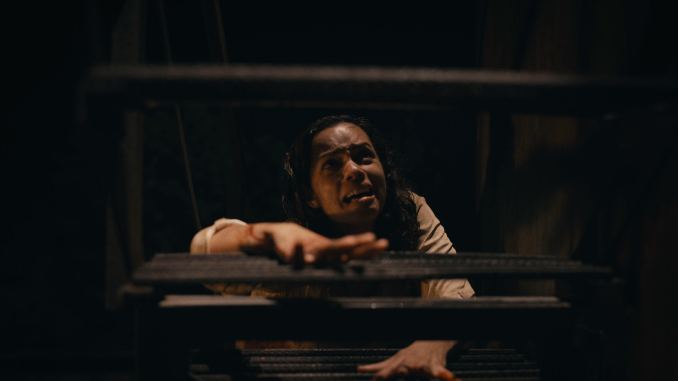With Barbarian, Smile, and Terrifier 2…Is Horror Good Again?

Back in May, I wrote an article about Men and on the contemporary, somewhat controversial style of “elevated horror.” I wrote about how Alex Garland’s impenetrable, infuriatingly mannered and narratively murky take on the way women exist in the world alongside the opposite sex signaled, to me, the peak of this style’s worst instincts and acted as a suitable nail in its coffin. If you are reading this, I assume you already know what elevated horror refers to. If not, I’m jealous. It’s the term used to describe modern horror films that many feel attempt to make a stereotypically denigrated genre into prestigious, respectable art. It used to be employed as a neutral classification for this wave of self-serious horror. But by becoming widespread and repeated to the point of self-parody (Men), it’s been progressively utilized ironically or even derogatorily.
And then came Barbarian. Like Men, Barbarian is a horror film about gender dynamics in the modern world. About how women navigate their lives under a perceived constant threat of men, and how this innate fear influences their behavior, the decisions they make and the people they trust. As a horror film “about something deeper,” it navigated its ideas with delicacy and a certain subtlety, even if the material isn’t subtle at all. The film feels like a throwback in the way it approaches the themes, harkening to a time when more mainstream horror films were able to tactfully balance subtext with spectacle. Barbarian explores different dynamics between its characters with a tense and queasy uncertainty: A young woman and the strange man who got double-booked in her Airbnb; the same woman and a Hollywood bigshot accused of sexual assault; a female store employee and a serial killer.
Barbarian depicts the circumstances in which a woman may or may not feel safe with a man she doesn’t know, and thus potentially lets her guard down or doesn’t. Sometimes this is to her own detriment, but that’s not really her fault. A society has been fostered in which women are constantly gauging how much risk they’re in from person to person, because they have been forced to be constantly on the defensive. None of this, in Barbarian, comes off as preachy or condescendingly obvious. Most importantly, Barbarian is fun and scary—it’s a good horror film. The ideas that Barbarian explores never actively take precedence over director Zach Cregger crafting effective horror, with jarring tonal shifts that give the film a real sense of ingenuity (if not quite deserving of the excessive enthusiasm people have expressed in likening it to last year’s Malignant).
But it’s this eagerness with which people have spoken, and the surprising box office take the film snagged on a $4.5 million budget, that signals the simple truth: Audiences are craving more horror movies like Barbarian and Malignant. Barbarian was not the only horror film on the lighter side to make a similar splash this fall. Smile and Terrifier 2, two films with very different budgets, distributors and styles, but two horror films equally far from what could be considered “elevated,” did gangbusters with audiences. Terrifier 2 in particular was something of a miracle: A low-budget, uber-violent indie that succeeded based on word of mouth, and in no small part from headlines evocative of The Exorcist that claimed people were throwing up while watching it in theaters. Audiences wanted to see what all the fuss was about—maybe even see if they’d throw up, too. The result? A film made for $250K made its budget back over 10 times.
-

-

-

-

-

-

-

-

-

-

-

-

-

-

-

-

-

-

-

-

-

-

-

-

-

-

-

-

-

-

-

-

-

-

-

-

-

-

-

-








































